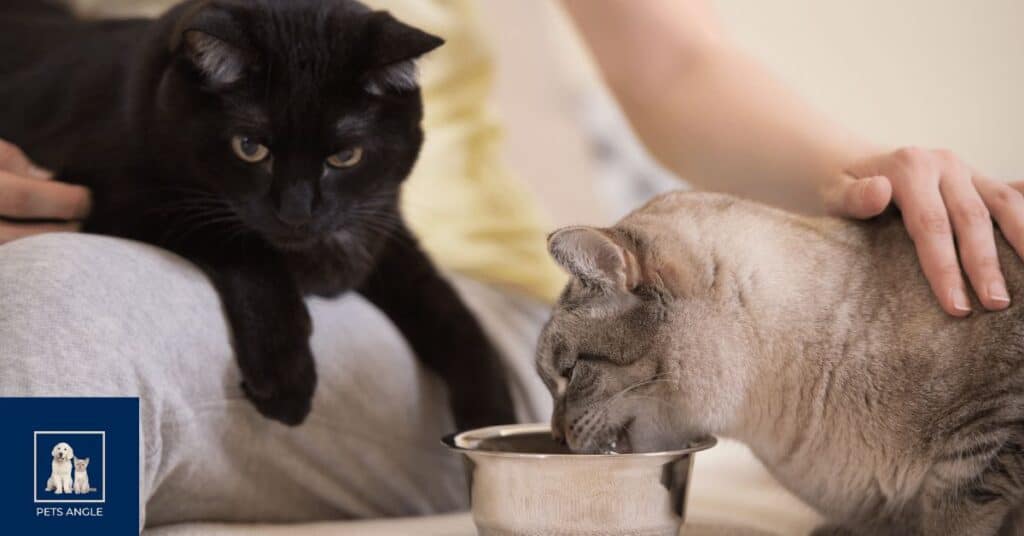As natural protein eaters, cats have unique dietary requirements. Failing to meet these requirements has a negative influence on their growth. Regrettably, we are living in unusual and challenging times.
While our pets can give us a great deal of pleasure and stress relief, our pets can also cause us more anxiety, particularly regarding their care and well-being in light of the difficult circumstances we are currently facing.
Many cat owners are concerned about pet food if their area is scarce or if they are unable or unable to get to the store to acquire it.
Emergency cat foods are human food or cat food alternatives that you can try in an emergency if you’ve run out of your cat’s favorites or if her favorite choice is unavailable.
As a result, there’s no need to be concerned if you run out of cat food for a short period or don’t want to use your emergency supplies.
Various meat categories are available as urgent cat food options. Fresh, animal raw meat, such as chunks of natural sheep or raw chicken with no preservatives added, and lean and cooked parts of beef, chicken, turkey, lamb, and hog, are excellent fresh meat options for cats.
Emergency cat diets include fish, cheese, berries, vegetables, fried eggs, greens, melons, rice, carrots, cereals, whole cereals, lettuce, and cucumber.
Causes For Adoption of Emergency Cat Foods
1. Pet food companies are seeing a sudden and significant increase in demand at this time, as people worldwide resort to the internet to buy food and other items for their pets. Because of the meteoric spike in sales, they cannot keep up with demand, which causes cat parents to run out of cat food after a while.
2. Current food delivery delays are significantly longer than usual, resulting in a vacuum in cat food at houses.
3. A transition period between switching cat food brands or determining the quality of the products available to be newly tested.
What to Look out for in Emergency Cat Foods
While human or dog foods (in some cases) will not make your cat sick, there are specific nutritional needs of cats to consider while using them as emergency cat diets:
1. The presence of taurine in emergency cat food options. It is a necessary protein for cats to get from their food.
2. Before choosing a protein or food item from your cupboard or freezer as emergency cat food, make sure it is low in salt and fat, as they might cause excessive thirst and gastrointestinal issues.
3. Make sure there are no preservatives or seasonings on the food.
Items To Avoid in Emergency Cat Foods
In addition to salts, preservatives, garlic, and onions, avoid alcohol, chocolate, grapefruits, citrus fruits, dairy products, and other substances capable of disrupting the cat’s digestive system.
Tips for Feeding Your Pet During a Disaster and Emergency cat Foods
1. Bring Plenty of Food and Water: The amount of food you should bring will vary depending on the type of pet and its size, but it’s always a good idea to have several cans of wet food or a large bag of dry food on hand.
Maintain adequate water level for your pet as you do for humans. Your cats are, after all, family members. Cats need reduced water volume if they eat canned food.
2. Double-check that the food you’re putting in your emergency kit is still edible and hasn’t expired: Before you fill it, double-check that the products you’re putting in it haven’t passed.
Replace canned food should every six months. Replace dry food should every three months.
Swapping out food twice a year, when daylight saving time begins and ends, or changing the batteries in your smoke alarms, is an easy method to remember to check the expiration dates of materials in your emergency kit.
Having an additional bag of dry food on hand and rotating it into your daily feedings is always a good idea.
3. Have your cleaning apparatus ready: Stainless steel bowls, which are easy to clean, or collapsible bowls, which are easy to travel, are recommended. Please make a list of what you’ll need ahead of time, pack it, and then double-check the bag to make sure it’s light and straightforward to carry.
4. Have a Plan B: If you run out of pet food, you can make do with canned people food like chicken, fish, and vegetables, or plain foods. Human food will most likely irritate their stomach, so stay away from it if possible. Keep a list of harmful foods to pets (for example, grapes and onions) in your emergency reserve to avoid any mistakes.
5. Be Prepared for likely adverse reactions from the cats: The objective is to ensure the safe transfer of the pets to vet facilities. Make sure you have all of your supplies and know where everything is. Because pets are a part of our households, a plan for human safety in a risky scenario should also include pet protection.
You can safely serve your cat a variety of good, nutritional, protein-based diets from your fridge, freezer, or pantry by observing due diligence measures.
If your cat is sensitive to human foods, it may experience a minor spell of upset stomach, diarrhea, or vomiting. Such a reaction may not be unusual. But if the response becomes too strong, don’t hesitate to get in touch with your veterinarian.
Do not forget that you should only feed your cat emergency foods when necessary You can also administer it as a once-in-a-while treat, but not as a regular part of their diet.

